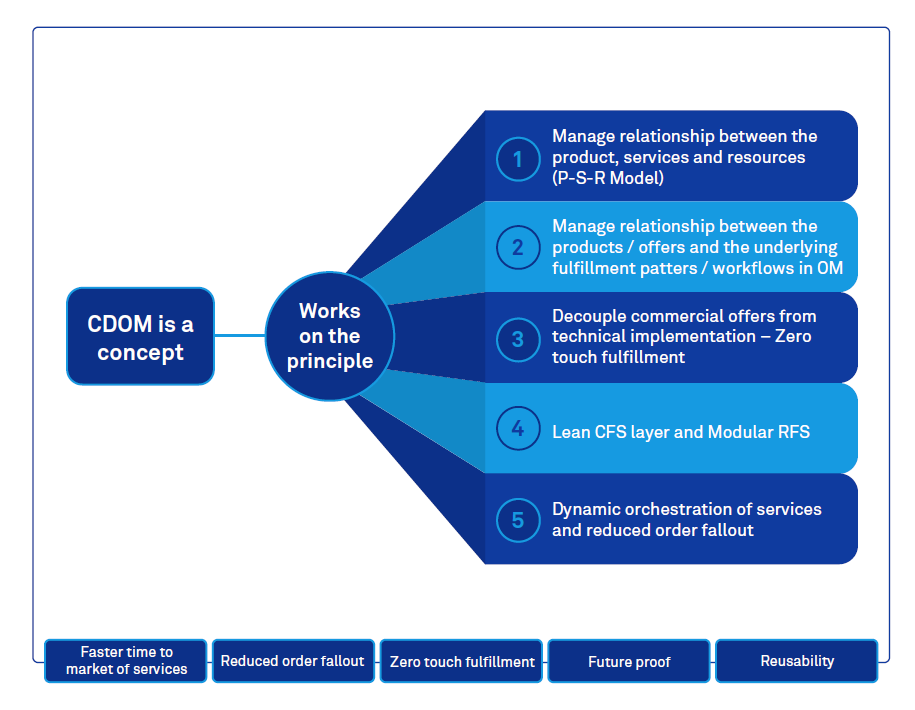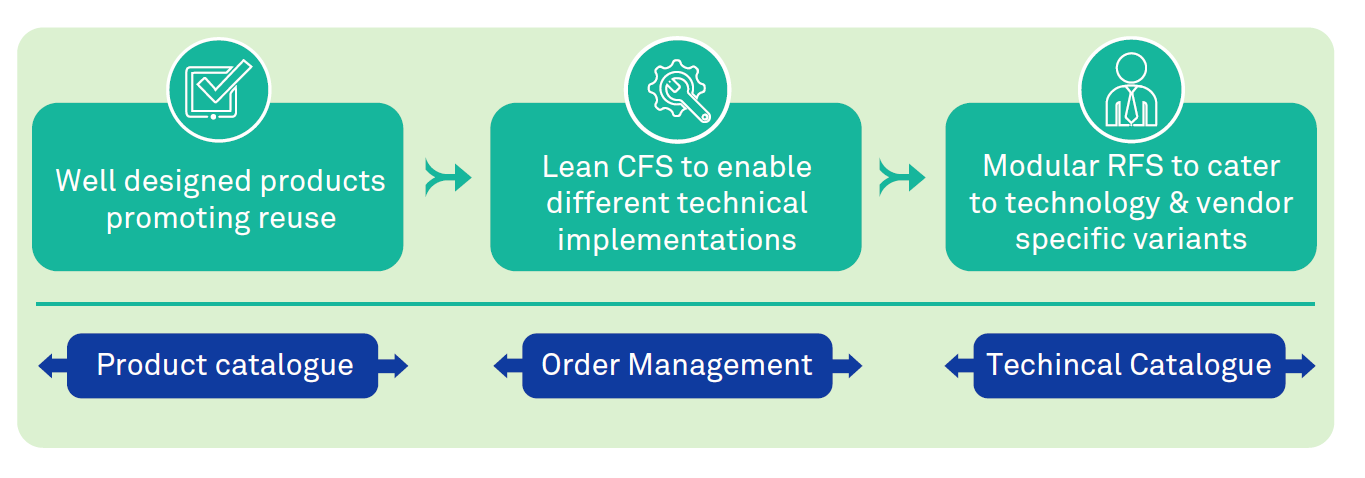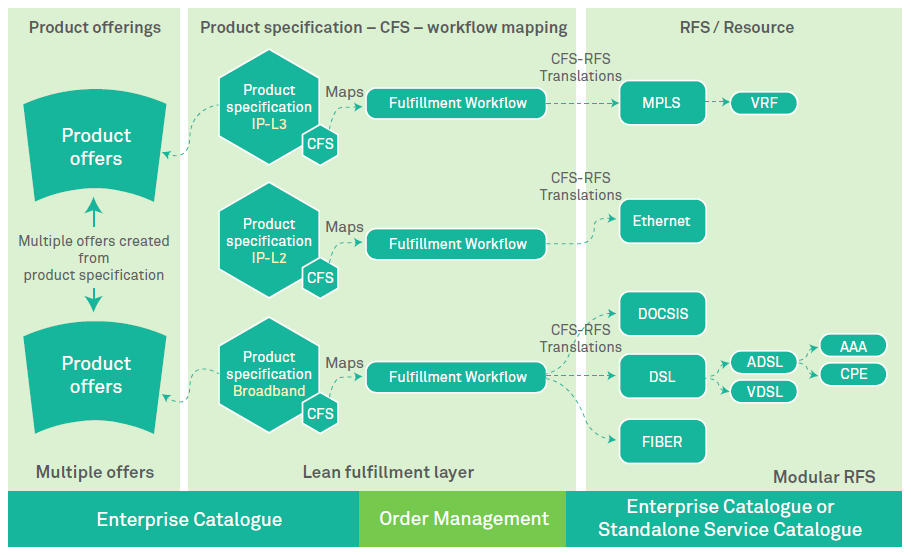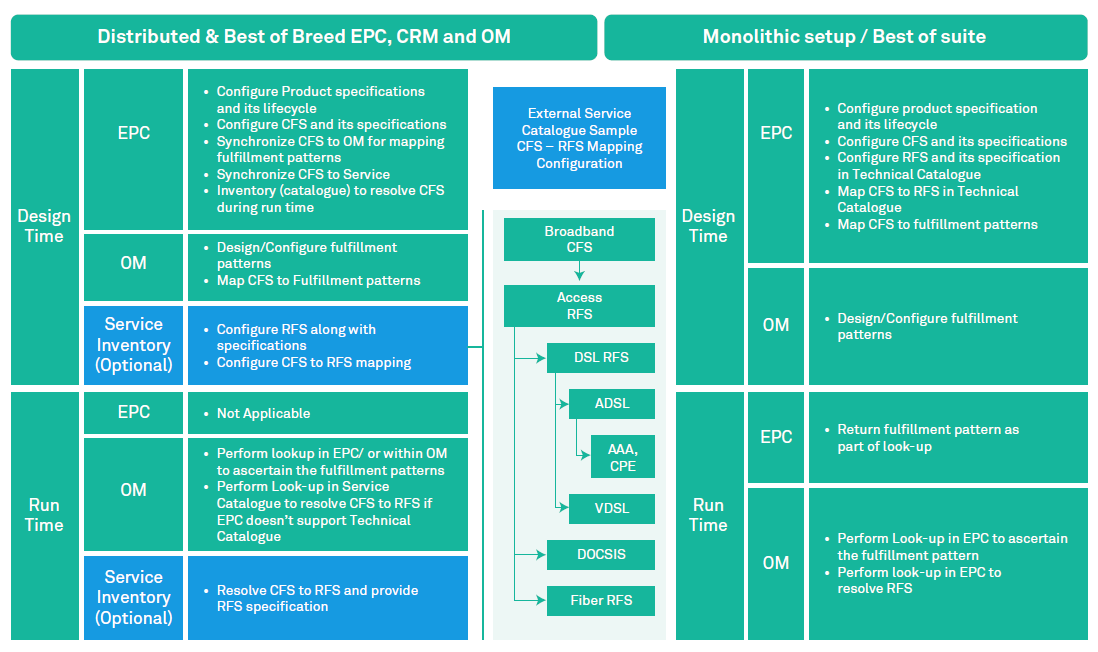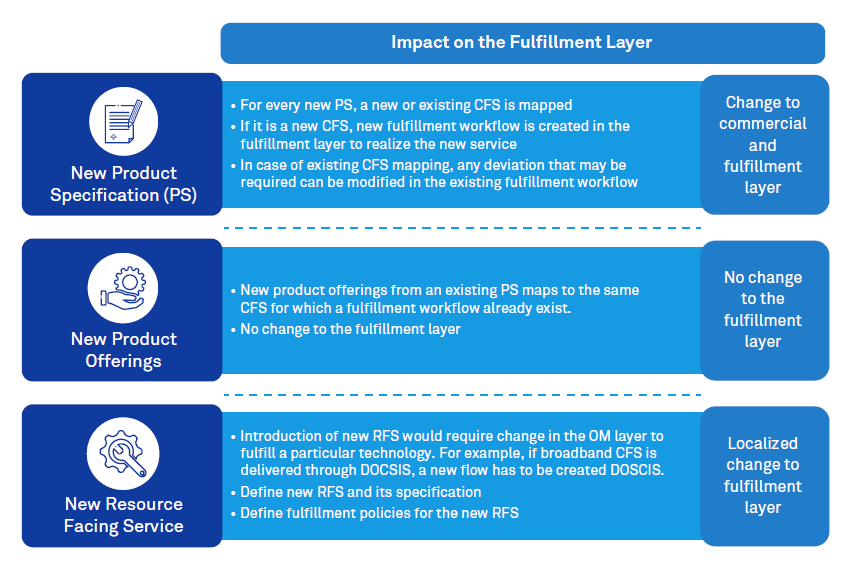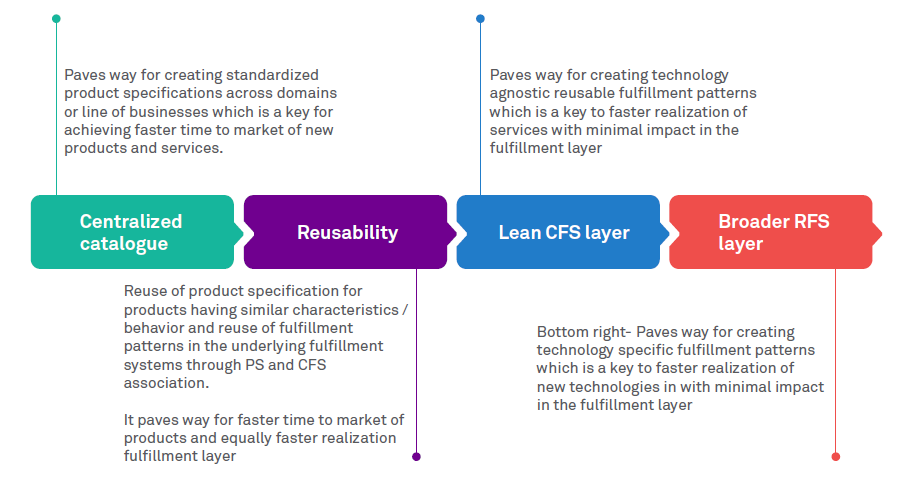Enterprise product catalogue plays an important role in the catalogue-driven order management in managing the relationships between commercial products, the services that they represent, and the resources that are required to implement the services, or what is otherwise called as Product-Service-Resource (PSR) model.
This article aims to shed light on various ways of implementing a catalogue-driven order management (CDOM) as against a monolithic setup. There is a general misconception that a CDOM has to be a pre-integrated monolithic system. However, the CDOM, as a concept, can be realized even in a distributed and best of breed environment. For example, the catalogue, CRM and order management can be from different product vendors and yet, CDOM can be realized.
The below diagram illustrates the principles on which the CDOM works. As long as these principles are followed, the CSPs will still be able to achieve CDOM without majorly altering their existing eco-system.

